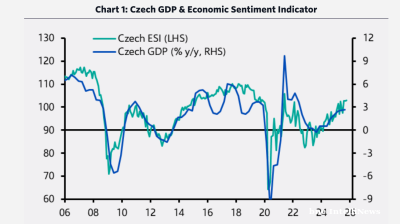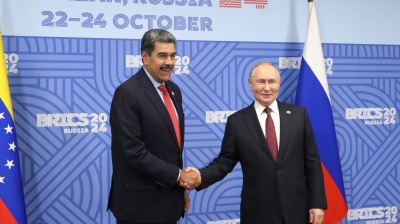Russia’s manufacturing sector saw a deeper contraction in October, with output, new orders, and business confidence all weakening, according to the latest Purchasing Managers’ Index (PMI) data from S&P Global, published on November 1. (chart)
The seasonally adjusted S&P Global Russia Manufacturing PMI dropped to 48.0 in October, down from 48.2 in September, marking the steepest decline in operating conditions since July. A reading below 50 indicates a contraction in the sector. The report highlighted that October was the fifth consecutive month of deteriorating conditions in Russian manufacturing, driven by sustained reductions in output and new business.
“The downturn was the quickest in three months amid sustained reductions in output and new orders,” S&P Global stated.
Companies cited ongoing financial pressures among clients as the main reason for the sharp decline in demand. The pace of contraction in new sales accelerated to its fastest in three months and was described as “solid overall.” At the same time, manufacturers reduced both employment and input buying in response to weakened conditions, while relying on stock depletion to manage costs.
“Firms remained in retrenchment mode as employment and input buying were cut again, with firms depleting stocks as a means of reducing costs,” the report said.
Production levels declined for the eighth straight month, although the rate of contraction eased slightly compared with September. Backlogs of work shrank further, and both pre-production and finished goods inventories declined. October marked the first fall in finished goods stocks in four months, reflecting broader efforts to cut costs amid sluggish demand.
Despite weak domestic demand, export orders returned to growth for the first time in several months. Surveyed firms reported more favourable sales conditions in existing international markets, providing a modest offset to domestic weakness.
Cost pressures also eased notably. Input costs rose at the joint-slowest pace in over 16 years, matching August 2025 levels, amid declining metal prices and subdued input demand. In response, firms lowered their output charges in a bid to attract new business—only the second time in three years that selling prices have been reduced.
“Russian manufacturers cut their selling prices for only the second time in three years in October,” S&P Global noted, attributing the move to “efforts to maintain competitive pricing for existing customers.”
Supplier delivery times improved slightly, marking the greatest reduction in lead times since November 2019, as vendors faced weaker demand and competition for orders.
However, business sentiment remained subdued. Confidence in future output fell to its lowest level since May 2022, with firms expressing concerns over the financial difficulties of customers and broader economic uncertainty heading into the final quarter of the year.
“Output expectations for the year ahead were also hit, with confidence dropping to the lowest since May 2022,” the report said.
The October data adds to mounting evidence that Russia’s manufacturing sector remains under pressure despite stabilisation in other areas of the economy. While export demand offers a partial cushion, domestic conditions appear increasingly fragile as inflationary pressures ease but demand remains constrained.
With geopolitical tensions ongoing, sanctions still in place, and government fiscal spending shifting towards defence-related industries, the broader industrial landscape in Russia may face continued volatility into 2026.
Data

Czech growth accelerates as domestic demand-side pressure builds
The Czech economy delivered an unexpected acceleration in the third quarter, marking a clear shift from its earlier position as a regional underperformer to one of Central and Eastern Europe’s fastest-growing economies.

Eurobonds of Istanbul-listed Zorlu units offer attractive yields amid rating downgrades and no default expectation
Debut paper currently offering 14-15% yield.

Ruble strengthens as sanctioned oil companies repatriate cash
The Russian ruble strengthened after the Trump administration imposed oil sanctions on Russia’s leading oil companies, extending a rally that began after the Biden administration imposed oil sanctions on Russia in January.

Russia's central bank cuts rates by 50bp to 16.5%
The Central Bank of Russia (CBR) cut rates by 50bp on October 24 to 16.5% in an effort to boost flagging growth despite fears of a revival of inflationary pressure due to an upcoming two percentage point hike in the planned VAT rates.




